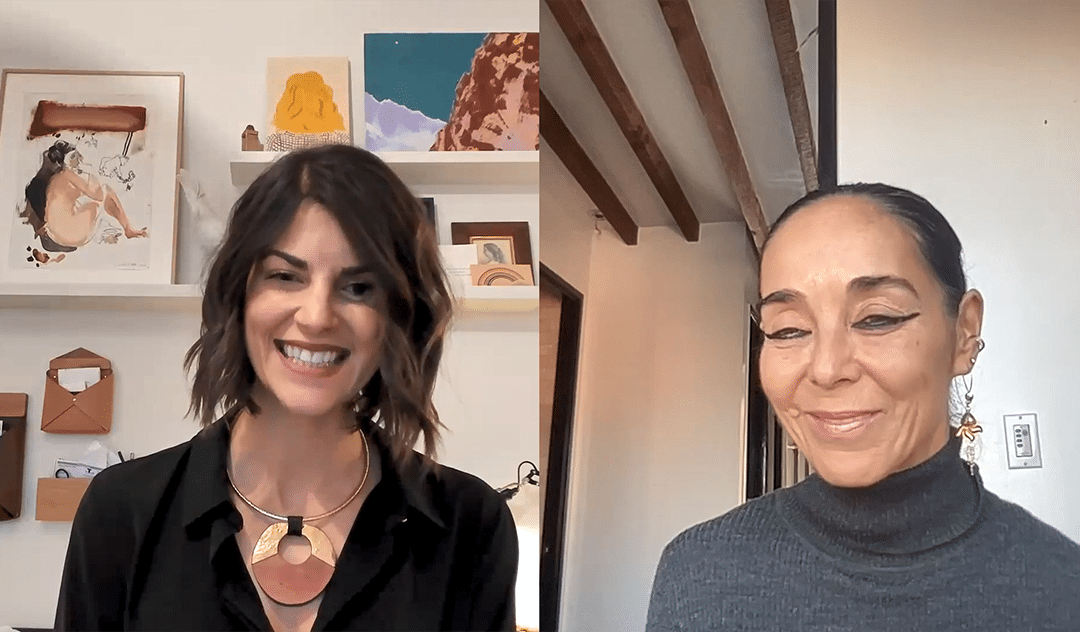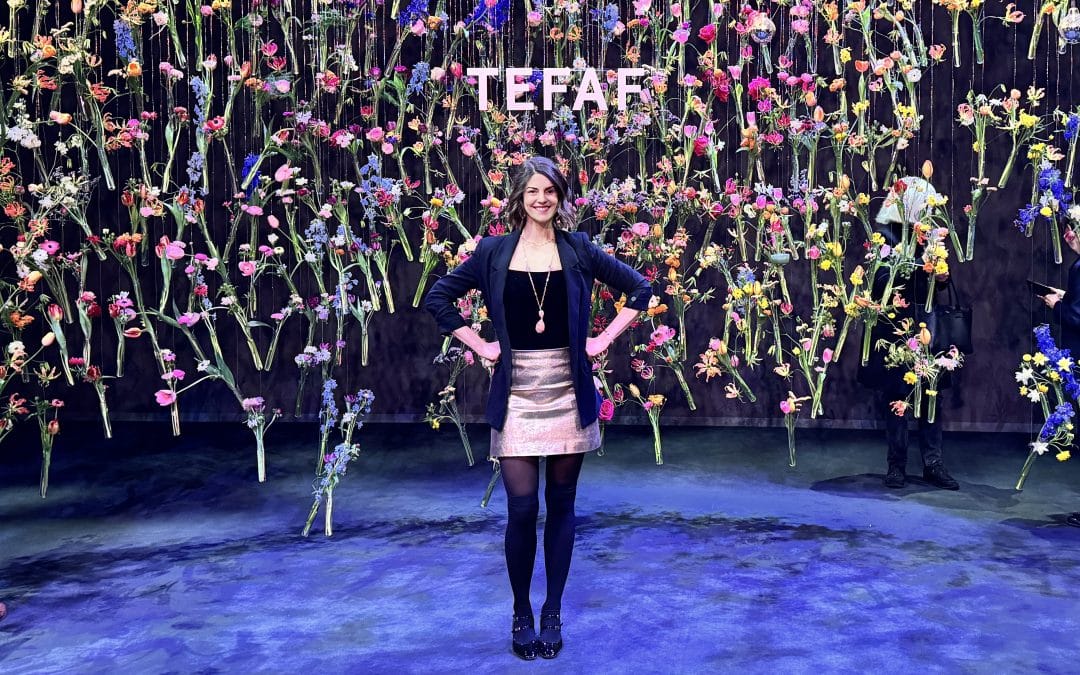Abdoulaye Konaté
Artist
Textile Tales: Art and Identity
Pauline Loeb invites Abdoulaye Konaté, the acclaimed Malian artist renowned for his textile mastery, to a revealing Q&A on artfairmag. Konaté shares insights into his journey from Bamako to Cuba and back, weaving African culture and social themes into his art. Discover how his heritage shapes his vision, the impact of collaboration, and his artworks’ global resonance in this enlightening session.

Abdoulaye Konaté pictured in front of Source de lumière (Soleil) Motif d’Arabie sur Fond Ocre (2024). 900 cm X 301 cm. Courtesy of Efie Gallery and Desire Ameka
Can you tell us about your artistic journey? What led you to work with textiles as your primary medium?
My artistic journey began at the National Institute of Arts in Bamako, Mali. I worked for many years at the National Museum, and then I received a government scholarship from Mali to study at the Higher Institute of Arts in Havana, Cuba, where I completed my Master’s degree. After that, I returned to Mali. Before going to Cuba, I was focused on drawing and painting. But after my time in Cuba and my experiences at the museum—especially working with exhibitions and spending time in the reserves where I got to know the objects and their meanings—my interest in local culture deepened. That’s when I started working more with acrylics, inspired by masks, textiles, and African literature.
Your work is deeply rooted in African traditions and your Malian heritage. How do these cultural elements influence your creative process and artistic vision?
The idea of working and traveling a lot for the National Museum, visiting other museums—whether in Africa, the West, or the Americas—made me realize the importance of the culture of different peoples and the depth of their creations, in all their diversity. It opened my mind to the fact that creation has no limits. I came to understand that art, in all its forms, is a way to reflect the essence of human experience, and that every culture contributes something unique to this creative process.
Many of your pieces address social and political issues. How do you select the themes you want to explore, and what role do you believe art plays in addressing these topics?
The social issues I explore are often global problems that reflect the shared suffering of the human soul, no matter the continent or country. Human suffering is the same everywhere, and I try to study it deeply. Based on that, I start reflecting and gathering information until I feel I’ve grasped the essence of the issue. From there, I begin making sketches and developing the work. In the development stage, many things can change, but the core message remains.
Color and symbolism are key elements in your work. How do you approach these aspects when creating a new piece?
For me, form and content are closely connected. Color, in particular, enhances the expression I want to convey because the sensation of color is universal. While everyone has their own aesthetic preferences, I often base my color choices on these preferences when working with different themes. I always try to link the theme to the color. Some works may be entirely white, others 80-90% black, or perhaps in ochre or green. Each choice reflects my personal perception of the subject.
In the series I created for my solo exhibition ‘Sambadio’ with Efie Gallery, color played a significant role. It’s one of the first elements that grabs the viewer’s attention, and I used it extensively to explore the interplay of light in that body of work. Reds, oranges, and yellows dominate the pieces that aim to transcend the experience of sunsets and sunrises, while indigo blues and whites in other works evoke nighttime, twilight, and even the stars and the deep blues of water at night.

Abdoulaye Konaté pictured in the studio.Courtesy of Efie Gallery and Desire Ameka
Often, the scale of the work isn’t immediately apparent, but when I focus on the theme, I think about the size of the piece. I don’t necessarily think about where it will be displayed, whether in a home or other venue; instead, I think about the space I’m creating to express myself fully and make sure the message reaches the viewers with the necessary impact.
Textile art is traditionally collaborative in many cultures. Do you work with artisans or communities in the creation of your pieces? If so, how does collaboration enrich your practice?
I work with several teams. The first team, closest to me, is made up of people who do the sewing, cutting, and embroidery. The second team works on the coloring, and they have their own expertise. The third team is responsible for weaving, which isn’t necessarily for my use, but I borrow motifs from them. I work with different groups depending on the project. For example, the largest piece I’ve created was 100 meters by 60 meters for the 2002 African Cup of Nations (CAN) in Bamako. For that project, I worked with many people from the community because it involved so much textile. There were hundreds of meters of fabric, and it required the involvement of dyers, tailors, and many others. It was a massive undertaking, and then we had to rehearse the installation at the stadium.
Your work has been shown around the world. How do you feel international audiences engage with the cultural and social narratives in your art?
We’ve had the chance to study artistic techniques and understand the concepts and aesthetics behind them, and we’ve had the opportunity to travel a lot. Perception is influenced by education, experience, and background, but I believe human feelings are nearly the same across the world. Everyone wants to live in peace, and no one wishes for suffering. Yet, human suffering is universal. Through different exhibitions, you can see how tastes and appreciations vary from continent to continent, but sometimes there’s a common understanding. For me, one of the most important things is that before I send my work abroad, I often show it to my family, my children, and others in
my household. They give their opinions, and I find their feedback very relevant. I always seek the views of people who aren’t necessarily involved in the art world but have their own ideas and perceptions when they look at the work.
Looking back at your career, is there a particular project or artwork that holds special meaning for you? Why?
There are works I’ve created that address major social issues—some of which are very difficult and not easy to sell. These are works no one may want to buy because of their strong political or social messages. For example, I created installations on the subject of protecting minority cultures, and I also worked on a piece about the Israeli-Palestinian conflict, which is about 20 meters long. My hope
for this piece is that the Israelis and Palestinians, can live side by side in peace and that religious tolerance can help ease the difference between them. The main issue is not just political; it’s rooted in religion. These works really affected me deeply. Another piece I created was about the war in Syria. Today, we have wars that no one imagined would unfold at this pace, like the war in Ukraine. With all the technology now available to destroy humanity, it’s as though we’re hovering above our own destruction. Europe has a degree of cultural violence that needs to be analyzed, tolerated, and accepted. We live in a world with so many different concepts of life and society, and every power wants to dominate the world by imposing its own social and economic doctrines. But there is so much space for peaceful coexistence—where we can accept each other, help humanity, and develop ways to live together without the desire to dominate. Instead of investing in weapons that can destroy the Earth, we should ask ourselves: what is the true purpose of human progress today?
Latest Interviews

Videast artist Shirin Neshat: Common Love & Common Pain.
Shirin Neshat, world reknowned photographer and video artist, talks about the magazine she curated for Der Greif, ‘Issue 16’. It’s all about common pain and common love.

Empowering African artists: Touria El Glaoui’s 1-54 Expands its Global Stage
Touria El Glaoui delves into 1-54, which champions contemporary African art, from its creation in London in 2013 to its expansion to Hong Kong this March.

From Delftware to Klimt’s Lost Portrait: My Favourite Finds at TEFAF Maastricht 2025
An exceptionally strong edition marked by museum-quality booths, inspired presentations, and a confident return of both private collectors and major institutions.

1-54 Marrakech 2025: A Full-On Experience of African Contemporary Art
Since its creation in 2018, 1-54 Marrakech is the unmissable rendezvous for African contemporary art. This year was no exception. I’m telling you why in the article.

PLAY Takes Center Stage at Investec Cape Town Art Fair 2025: A Preview of What’s to Come
Dive into the 12th edition of Cape Town Art Fair, where emerging scenes and fresh discoveries take the spotlight in an exploration of PLAY.
